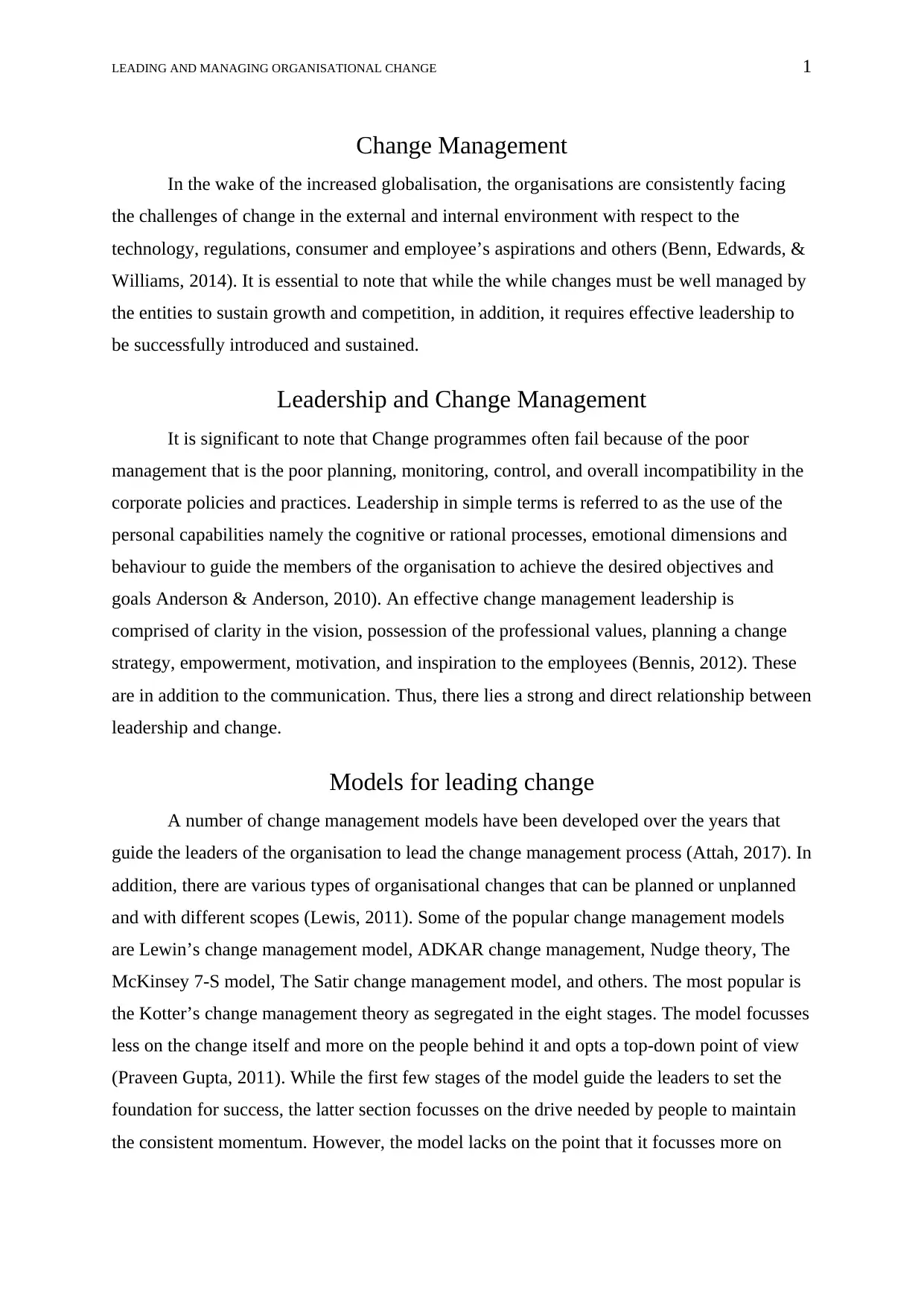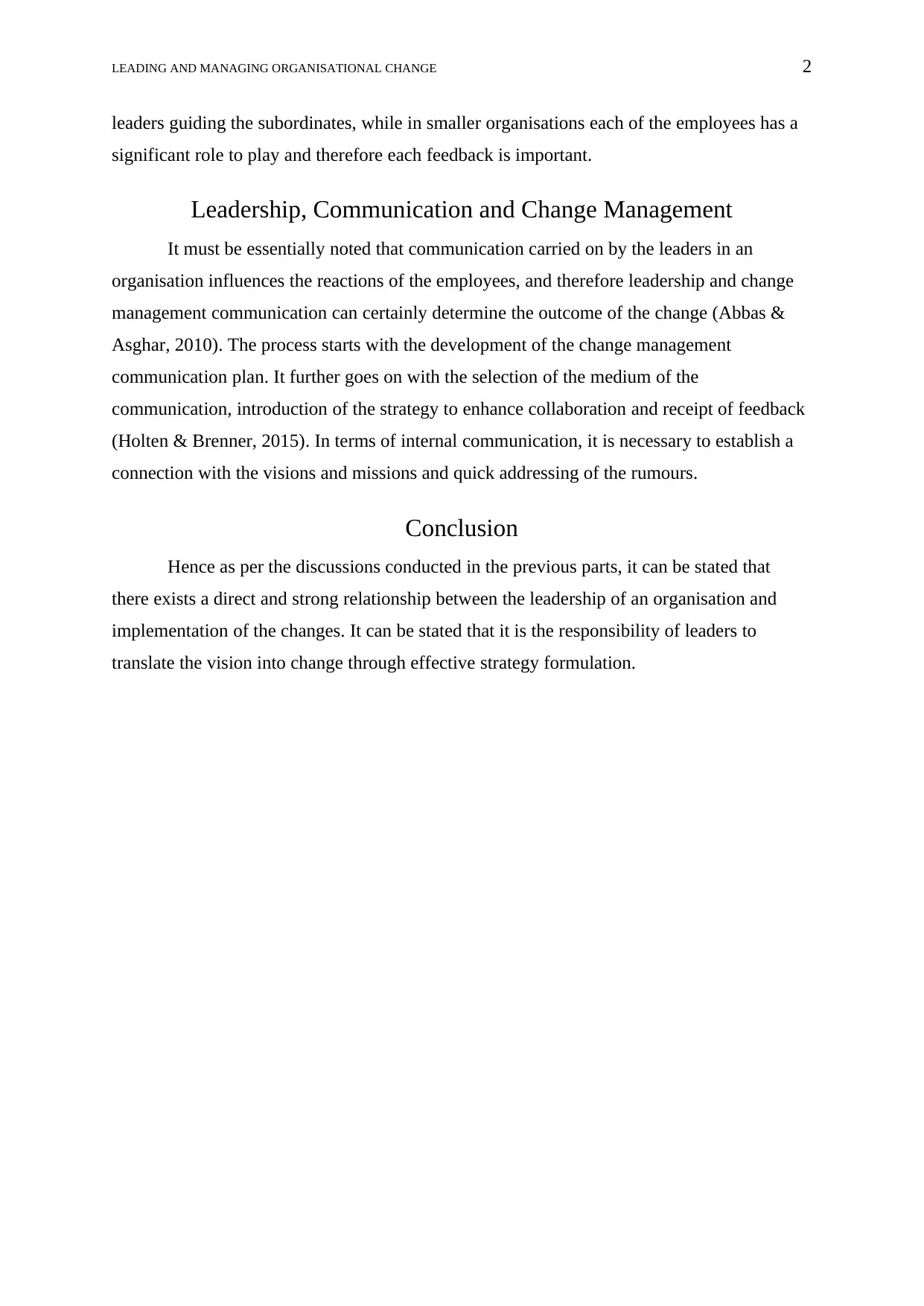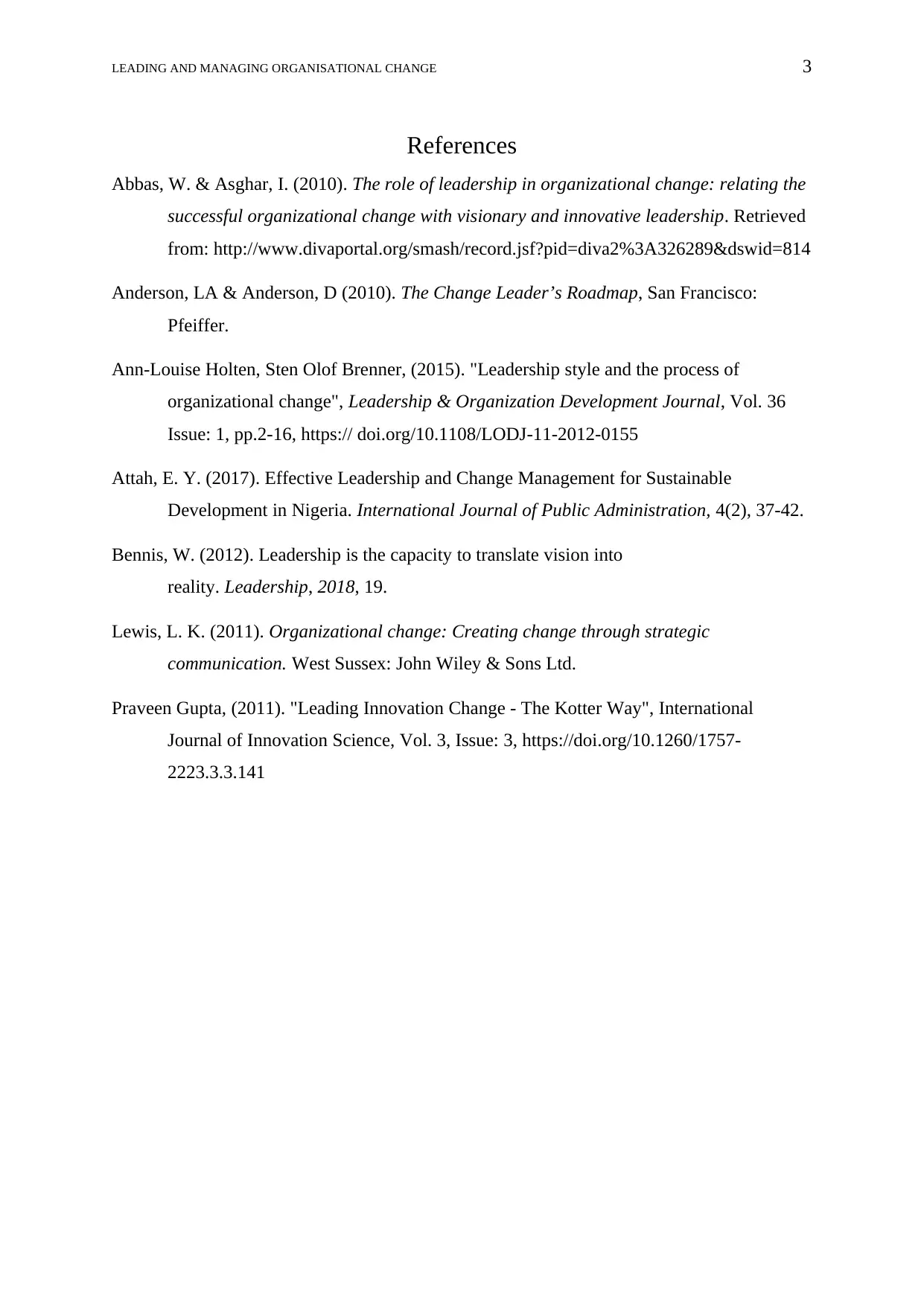The Impact of Leadership on Strategic Change Management Processes
VerifiedAdded on 2023/04/11
|3
|710
|62
Report
AI Summary
This report examines the critical relationship between leadership and change management within organizations, highlighting how effective leadership is essential for successfully implementing and sustaining change. It emphasizes that change programs often fail due to poor management and incompatibility with corporate policies. Effective change management leadership includes clarity in vision, professional values, strategic planning, empowerment, motivation, inspiration, and communication. The report discusses various change management models, including Kotter's eight-stage model, and underscores the importance of communication in influencing employee reactions during change initiatives. Ultimately, the report concludes that leaders are responsible for translating vision into change through effective strategy formulation and communication, ensuring that organizational changes are successfully implemented.
1 out of 3










![[object Object]](/_next/static/media/star-bottom.7253800d.svg)